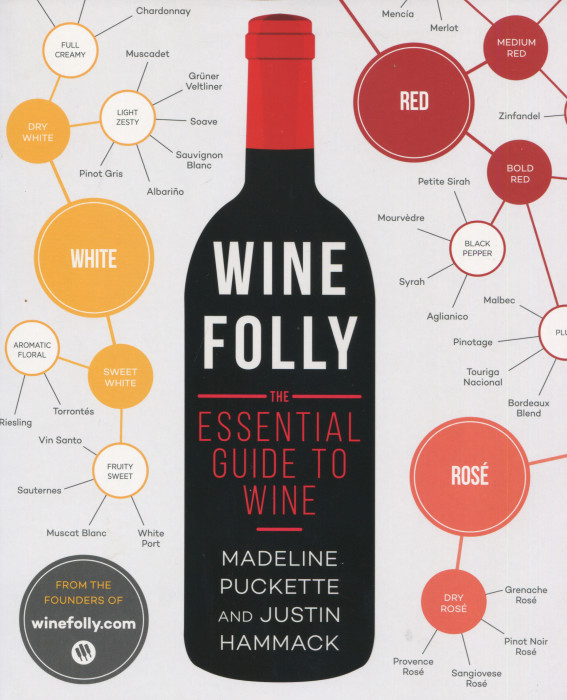Wine. We drink it. We often relish it. We are often, so often, are nervous about wine. What to drink with what food? How to store? How to pour? Does the glass matter? If someone asks you about Australian wine, what can you say? Or mumble?
I am one of those people who is not wine-wise. I’ve read books, taken courses. I carry a slim wine guide when I go to a fancy restaurant — but it’s hard to look at a long wine list and match it up with book’s suggestion. Sometimes there is almost no overlap between the restaurant and the book. [Yes, I do have a current book!]
Part of the problem is the amount of wine. Each year, almost 7 billion gallons of wine are produced in the world. How much is that? Imagine 99 city blocks in Manhattan covered by 40 feet of wine. That’s a lot of wine.
And each day, 600 new wines are introduced into the world’s portfolio. You cannot begin to make sense of it all. It not only seems overwhelming, it is overwhelming.
The team at www.winefolly.com has produced a wine education website for people like me and you. That team has produced this wonderful book called, what else, Wine Folly. It’s a brilliant read. More important, it’s a brilliant view.
Infographics are those clever diagrams you see now in newspapers and online. Graphics that try to convey, in a picture, some network of information and relationships that would take many paragraphs if not pages. A picture can be worth far more than mere thousand words.
Consider this culinary challenge: what wine do you serve with what cheese? The answer can take pages to detail, and in those pages your eyes may fade and you may get lost. Here’s the answer from Wine Folly:
There are two hundred pages of diagrams devoted that full spectrum of questions and issues we face:
- Fundamentals including tasting, handling and pairing
- Styles of Wine: Sparkling to dessert with rose and different levels of white and red
- Details of 55 wine types: the dominant flavors, the potential secondary flavors, where the grapes grown, and how those regions offer their particular nuances
- Wine Regions: surveys the top dozen countries making wine, accounting for 80% of those 7 billion gallons.
Along the way, the pages pour out intriguing facts and insights. Worried about the calorie count of a glass of wine? The count is driven by the alcohol content and each 1% increase in alcohol content up the calorie count by 15.
Here’s quick and possibly tricky question. Which country has the most acreage devoted to wine growing? France obviously? No, maybe Italy? The United States with all those West Coast vineyards from San Diego to Seattle.
It’s Spain with 2.5 million acres. So, if you visit Spain are you going to see vines everywhere you drive, over every hillside? No, 2.5 million acres sounds like a big number but it is an area just 62 by 62 miles square. And that is just 2% of the total land mass. Most of Spain is grape free.
The maps for each of these principal wine growing countries shows the relatively tiny area in countries, like Germany, actually devoted to wine making. Wine Folly shows you the modest slivers of land where just the right conditions exist to support one particular grape varietal — a grape varietal that, grown in another region, will have a distinctive taste and yield very different wine.
You cannot read Wine Folly in simple beginning-to-end order and capture it all in one pass. This is a book to sit down and randomly select a page or a section. Compare the different countries and visualize those statistics on the area. Or, the next time you enjoy that rich nebbiolo, realize that all the nebbiolo in the world is grown on just 20 square miles, almost all in Italy.
Ok. I’m a wine enthusiast and a nerd. If you are either, then you will love Wine Folly. If the standard wine books are too hard to read, then these many pictures are the perfect wine encyclopedia.


